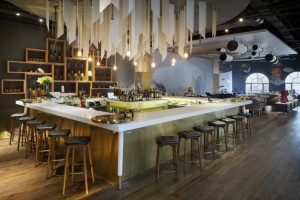Running a restaurant presents a unique set of accounting challenges for many managers and owners. Issues such as transient staff, high transaction volume and theft are key concerns for restaurant owners, and having a robust system in place to handle these situations can go a long way. From general purpose accounting software to restaurant-specific accounting software, there are several options to choose. As technology continues to evolve and change the business environment for restaurant owners, accounting professionals have a real opportunity to be a trusted advisor with specialized knowledge.
“The accounting industry serves restaurant clients as well as it serves any other type of clients – which is to say, with varied degrees of success, depending on our area of expertise. For our clients, there is a vast difference between working with a finance team that really knows, understands and lives and breathes your industry, and one that dabbles,” said Matt Hetrick, President, Culinary Accountants, Inc.
Restaurant owners need to implement a robust accounting system that is independent from the personnel executing them and simple to use, can handle processing numerous transactions in a short time span, and will streamline processes. The food industry can be a hectic and stressful environment that oftentimes require quick decision making, and having accurate information readily available is crucial. Another characteristic of the restaurant industry is that many workers are young, not financially savvy and/or reliant on tips, which can result in errors or theft, or both.
“Restaurants deal with a high volume of individual transactions – many of which take place in a kitchen, bar, or dining room during the 2-3 hour rush each evening. Decisions need to be made on the fly, and often accounted for on the fly, after the guest is satisfied. The potential for theft in the restaurant world is quite high, comparatively, too. Staff are often tempted to exchange free (stolen) goods for higher tips, because of the tip-based compensation model,” said Hetrick.
Accounting professionals that are focused on the restaurant industry will not only be familiar with the challenges their clients face, but will also know what solutions exist to help alleviate their clients’ pain points. Available restaurant accounting software varies from simple to fully customizable. Some restaurants, like startups, may benefit from general-purpose accounting software, while others will need restaurant accounting software.
General-purpose accounting software have features such as general ledgers, profit and loss, cash flow, basic inventory and payable and receivables, but they need to be customized for the restaurant industry. Even then, reporting limitations still exist. Accounting software especially designed for restaurants will include features specific to the restaurant industry such as native POS systems, menu planning, cost accounting, inventory, payables, receivables, shift management, wage and tip management, but may have less robust accounting features. The expanded features of restaurant accounting software make it easier for owners and managers to handle shift changes and cancellations and inventory fluctuations. It will also help managers and owners manage the cost of their ingredients, while maintaining competitive pricing and tracking peak demand times for various items. General purpose accounting programs, on the other hand, have less of a learning curve and have been around for a while. What system a restaurant chooses to implement ultimately depends upon the needs of the business and the business’ financials. Regardless of the system used, accountants need to work with closely with their clients to ensure that the proper protocols and procedures are being followed.
“The accounting software you utilize is only going to be as good as the effort you put into using it. You can use either general purpose accounting programs, such as QuickBooks or Xero, or more specialized restaurant specific programs like PlateIQ, Breadcrumb/Upserve or Toast. Either approach requires a commitment to consistency, process, simplification, and feedback-utilization,” said Hetrick.
As accounting professionals help clients decide which solutions are best for them, it’s important to remember that accountants need to constantly look to the future. They should constantly pull in real-time data to assess the restaurant’s accounting needs and help clients make business decisions to ensure long-term growth and success.
“Accounting should be a constant conversation, and the challenge moving forward is to make it a meaningful conversation between experts in restaurant finance and experts in restaurant operations, using the best tools available. The tools keep evolving and improving, so we have to adapt to use them in the most meaningful and efficient ways possible,” said Hetrick.
